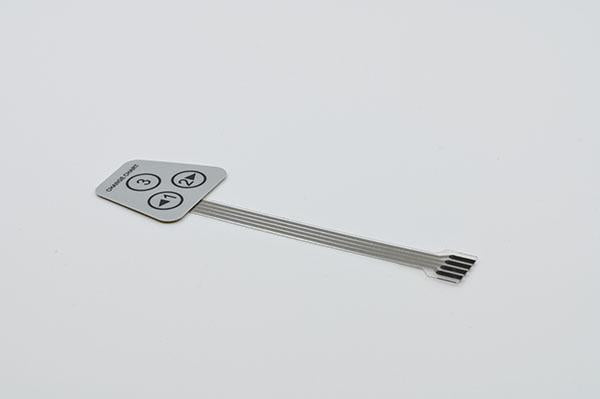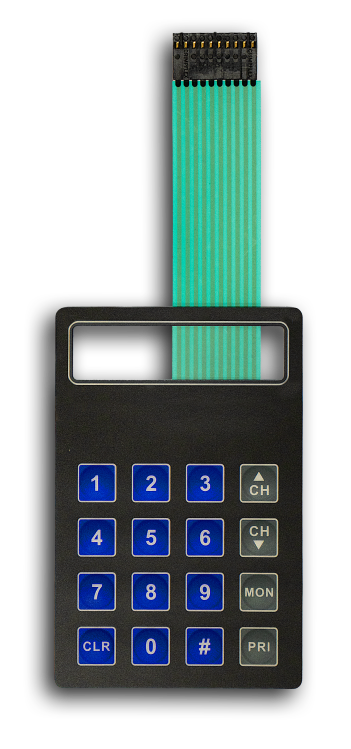Discover How Membrane Switches Feature and Their Role in Modern Electronics
Membrane Switches stand for a sophisticated combination of technology and style within the realm of modern electronics, functioning as necessary user interfaces in many devices. Made up of several layers, these buttons make use of pressure-sensitive devices to help with customer communication. Their applications span numerous industries, from consumer electronic devices to medical equipment, highlighting their adaptability and relevance. Recognizing the ins and outs of Membrane button capability and their more comprehensive ramifications in enhancing individual experience invites more exploration right into their style, advantages, and the innovative advancements forming their future in technology.
What Are Membrane Switches?

Membrane switches are identified by their longevity and resistance to environmental elements, such as dust, wetness, and extreme temperatures. They can be tailored with numerous graphics, shades, and responsive feedback options, enhancing user experience while maintaining aesthetic appeal - membrane switches. The consolidation of published circuits enables for seamless combination into gadgets, enhancing overall functionality.
The versatility of Membrane switches appears in their ability to sustain both complex and straightforward control features. They can include attributes such as LED indications and touch-sensitive innovation, dealing with specific customer demands. As technology continues to advance, Membrane Switches continue to be vital for allowing instinctive and reliable individual interfaces, consequently playing a crucial function in the innovation of modern-day digital tools.
Elements of Membrane Buttons
Membrane switches are made up of a number of essential components that collaborate to create a trustworthy and functional interface. The primary components include the visuals overlay, adhesive layer, spacer layer, and conductive traces.
The visuals overlay offers as the interface, commonly printed on an adaptable substrate such as polyester or polycarbonate. This layer not just offers visual appeal yet likewise consists of responsive feedback, aesthetic signs, and safety attributes. Below the visuals overlay exists the glue layer, which protects the button to the device and makes sure sturdiness against ecological stresses.
The spacer layer is vital for keeping the required gap between the graphic overlay and the circuit layer. When stress is used, this gap enables for the activation of the button. The conductive traces, typically made from silver or carbon, develop the electric pathways that finish the circuit when the button is involved.
Additionally, a backing layer may be consisted of for architectural assistance and insulation. These components work together effortlessly, making certain that Membrane buttons are both resistant and user-friendly, making them essential in numerous modern digital applications.
Just How Membrane Switches Work
How do Membrane Switches feature properly within digital devices? Membrane Switches run on the concepts of pressure-sensitive look these up innovation, using a split building that includes visuals overlays, sticky layers, and conductive elements.
The layout of Membrane switches is crucial for their effective procedure (membrane switches). The layers are meticulously crafted to provide responsive feedback, toughness, and resistance to ecological variables such as wetness and dirt. The inclusion of domes-- small, raised areas within the switch-- boosts tactile action, offering customers with a visible click feeling upon activation
Furthermore, Membrane buttons can be customized in terms of size, form, and graphics, making them suitable for various applications. They are often made use of in control panels, clinical tools, and consumer electronics due to their sleek design and dependability. In general, the reliable performance of Membrane buttons is essential in improving individual communication and ensuring smooth procedure in contemporary electronic tools.

Applications in Modern Instruments
Using their unique design and performance, Membrane buttons have actually become essential parts in a vast array of modern electronic tools. These versatile interfaces are utilized in consumer electronic devices, commercial equipment, medical gadgets, and automotive controls, giving seamless customer communication.
In customer electronics, Membrane switches are commonly found in appliances like microwaves, washing machines, and other home tools, where they make it possible for intuitive control with a streamlined profile. Their low-profile design assists in assimilation into compact tools, improving visual appeal without endangering capability.
In commercial applications, Membrane Switches offer as control panels for machinery, using toughness and resistance to extreme settings. Their capability to stand up to moisture and contaminants makes them suitable for use in manufacturing and handling sectors.
Medical tools likewise take advantage of Membrane buttons, which are made to be simple to clean and preserve, making sure health in medical setups. They are typically used in analysis tools, patient tracking systems, and mobile clinical gadgets, where dependability is vital.
Benefits of Membrane Buttons
One of the vital advantages of Membrane buttons is their convenience, which allows them to be customized for a selection of applications across multiple industries. These buttons can be designed in different sizes and shapes, accommodating unique product requirements while giving seamless combination into tools. Their slim account enables a streamlined and portable design, commonly enhancing the visual appeal of digital products.
Another considerable benefit is their toughness - membrane switches. Membrane switches are normally immune to dirt, wetness, and chemicals, making them perfect for rough atmospheres. This strength extends their life expectancy compared to traditional mechanical switches, reducing the demand for frequent substitutes
In addition, Membrane Switches hop over to here offer cost-effectiveness. The production process includes printing innovations that reduce production costs, especially for huge runs. This affordability, integrated with reduced maintenance demands, makes them an attractive alternative for manufacturers.

Conclusion
In final thought, Membrane useful source Switches stand for a substantial development in user interface innovation within contemporary electronic devices. As the need for instinctive and resistant interfaces continues to expand, the function of Membrane switches in forming individual experience will unquestionably broaden.
Membrane Switches represent an innovative integration of technology and layout within the realm of modern-day electronics, offering as important interfaces in countless devices.In the realm of modern electronic devices, Membrane Switches serve as essential components that facilitate user interaction with gadgets. As technology proceeds to evolve, Membrane Switches remain crucial for allowing instinctive and effective individual interfaces, therefore playing a critical function in the improvement of modern digital gadgets.
Just how do Membrane Switches feature effectively within electronic gadgets? Overall, the efficient functioning of Membrane buttons is pivotal in improving customer communication and making sure smooth procedure in modern electronic gadgets.